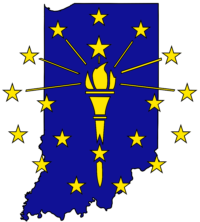 The failure to publish proper notice is rarely punished, so it was surprising to see local officials in Maine and Illinois recently relieved of their positions as a result of breakdowns in the public notice process. The sacked officials compounded their problems with other missteps, but notice issues were at the center of both dismissals.
The failure to publish proper notice is rarely punished, so it was surprising to see local officials in Maine and Illinois recently relieved of their positions as a result of breakdowns in the public notice process. The sacked officials compounded their problems with other missteps, but notice issues were at the center of both dismissals.
In Maine, Stephen Beckert was removed from his position as chairman of the Eliot Planning Board on Sept. 14 after an investigation found the board consistently failed to publish newspaper notice of its public hearings. Beckert’s dismissal was the culmination of three years of conflict with a handful of local residents, particularly citizen watchdogs Michele and Jay Meyer (pictured above). During that period, the Meyers regularly attended Planning Board meetings and “became involved in several high-profile board cases and actions,” according to the Portsmouth (N.H.) Herald.
North Carolina County Requests Own Local Notice Bill
 Rockingham County’s Board of Commissioners last month approved a referendum asking the state legislature to allow all government units in Rockingham to publish public notices on the county’s official website rather than in local newspapers.
Rockingham County’s Board of Commissioners last month approved a referendum asking the state legislature to allow all government units in Rockingham to publish public notices on the county’s official website rather than in local newspapers.
The resolution specifically referenced the General Assembly’s passage two weeks earlier of Sen. Trudy Wade’s (R-Guilford) Senate Bill 181, which authorized neighboring Guilford County to move all public notices in the county from newspapers to its official website. Wade’s bill was almost identical to House Bill 205, an earlier measure she backed that passed the legislature this summer but was swiftly vetoed by Governor Roy Cooper (D). However, unlike HB 205, Wade’s latest effort to eliminate newspaper notice was drafted as a veto-proof “local” bill.
N.C. Public Notice Legislation Resurrected as Local Bill
 North Carolina State Sen. Trudy Wade’s battle to eliminate public notice in newspapers is set to move to a new front this week. According to the News & Record, the state legislature is expected to consider a local version of her public notice bill when it reconvenes on Wednesday.
North Carolina State Sen. Trudy Wade’s battle to eliminate public notice in newspapers is set to move to a new front this week. According to the News & Record, the state legislature is expected to consider a local version of her public notice bill when it reconvenes on Wednesday.
Wade’s previous public notice bills have been state legislation. Even her measure that was vetoed in July by Gov. Roy Cooper — which had been amended minutes before it passed to focus solely on Guilford County — was a North Carolina bill. Like that bill, her latest effort would affect only Guilford County, but it has been written as a piece of local legislation. Local legislation can’t be vetoed by the governor.
National Studies Show Newspapers Preferred as Source of Public Notice
 Two recent national studies clearly indicate that many people read public notices in their local newspapers. The studies also show that newspapers remain a far more effective medium for public notice than government websites.
Two recent national studies clearly indicate that many people read public notices in their local newspapers. The studies also show that newspapers remain a far more effective medium for public notice than government websites.
Susquehanna Polling and Research’s survey of 1,000 U.S. households, commissioned by the National Newspaper Association (NNA), asked two questions of direct interest to policymakers focused on public notice issues. The first question asked respondents to indicate on a scale of one to seven how often they read public notices in their community newspaper, where one equals “never” and seven means “very often”. The mean score of their response was 3.93, with a full 21 percent saying they read notices in the paper “very often” and 81 percent indicating implicitly they read newspaper notices at least some of the time.
TV Stars Announce Engagement via Newspaper Notice
Just sayin’ …
It’s official! #GameofThrones stars Kit Harington and Rose Leslie’s engagement confirmed with an official notice in today’s Times newspaper. pic.twitter.com/MSN3dRxj4m
— lizo mzimba (@lizo_mzimba) September 27, 2017
More Newspapers Should Do This
 The Aug. 30 issue of the (Scranton, Pa.) Times-Tribune featured a story by public-notice reporting wiz Jim Lockwood about the annual “upset sale” of tax delinquent properties in Lackawanna County. The story was prompted by a six-page notice in the paper listing 1,883 properties for which delinquent taxes are owed to the county.
The Aug. 30 issue of the (Scranton, Pa.) Times-Tribune featured a story by public-notice reporting wiz Jim Lockwood about the annual “upset sale” of tax delinquent properties in Lackawanna County. The story was prompted by a six-page notice in the paper listing 1,883 properties for which delinquent taxes are owed to the county.
The story includes comments from the public official responsible for placing the notice. Here’s what he told Lockwood, who won PNRC’s Public Notice Journalism Award in 2015 and came in second in last year’s contest.
Federal Agency Eliminates Newspaper Notice for Health Provider Infractions
 The winning entry in PNRC’s 2016 Public Notice Journalism contest was Ken Little’s story in the Greeneville (Tenn.) Sun about the Centers for Medicare & Medicaid Services (CMS) decision to terminate its provider agreement with the John M. Reed Health & Rehabilitation facility in Limestone.
The winning entry in PNRC’s 2016 Public Notice Journalism contest was Ken Little’s story in the Greeneville (Tenn.) Sun about the Centers for Medicare & Medicaid Services (CMS) decision to terminate its provider agreement with the John M. Reed Health & Rehabilitation facility in Limestone.
In this year’s contest, third place went to a similar story — Victor Parkin’s coverage in The Mirror-Exchange of CMS’s closure of Milan Health Care and the $2 million in fines subsequently levied against the Gibson County nursing home by the federal government and the state of Tennessee.
N.C. Governor’s Public Notice Veto Still Stands
 This story was updated on Sept. 5.
This story was updated on Sept. 5.
North Carolina Gov. Roy Cooper’s veto of a bad public notice bill is safe for now.
The state’s legislature adjourned for the year on Aug. 31 without ever having voted whether to overturn the governor’s veto of HB 205, Sen. Trudy Wade’s (R-Guilford) apparent effort to punish the newspapers in her district.
N.C. County Targeted in Public Notice Bill
 If at first you don’t succeed, try, try again.
If at first you don’t succeed, try, try again.
North Carolina State Senator Trudy Wade (R-Greensboro, photo on left) heeded that advice and last week finally succeeded in passing a bill that makes government less transparent.
After her two previous efforts to move public notice in the state from newspapers to government websites failed, in March Wade introduced another sweeping revision of the state’s public notice laws. When her bill stalled in the House, as it had in the previous legislative session, Wade didn’t give up.
Budget Notices on Government Website Leave Indiana Citizens in the Dark
 In 2014, then-Indiana Governor Mike Pence signed a law passed by the Indiana legislature that eliminated newspaper notice of local government budgets. Before the law was enacted, all local government units in Indiana — from cities and counties to libraries and conservation districts — were required to publish their annual budget proposals and estimated tax rates in a local newspaper.
In 2014, then-Indiana Governor Mike Pence signed a law passed by the Indiana legislature that eliminated newspaper notice of local government budgets. Before the law was enacted, all local government units in Indiana — from cities and counties to libraries and conservation districts — were required to publish their annual budget proposals and estimated tax rates in a local newspaper.
Now they are only required to post them on the website of the state’s Department of Local Government Finance (DLGF), which was one of the main proponents of the new law.
CJR Piece on Public Notice Badly Misinformed
 In a recent article in Columbia Journalism Review, Liena Zagare and Ben Smith argue that local governments should move public notice and other civic advertising from newspapers to local-news websites like Zagare’s BKLYNER.
In a recent article in Columbia Journalism Review, Liena Zagare and Ben Smith argue that local governments should move public notice and other civic advertising from newspapers to local-news websites like Zagare’s BKLYNER.
To buttress their case, they claim that a newspaper in their borough, the Brooklyn Eagle, recently had “three of its 12 pages entirely covered” by advertising designed to “make sure taxpayers see how their money is being spent, and to prevent officials from hiding corrupt deals.” But those three pages of advertising in the Eagle were placed by law firms, not public officials. And its purpose was to provide official notice of courtroom process, not public spending. That’s a pretty glaring mistake. Surely, CJR would want to correct the record, right?
